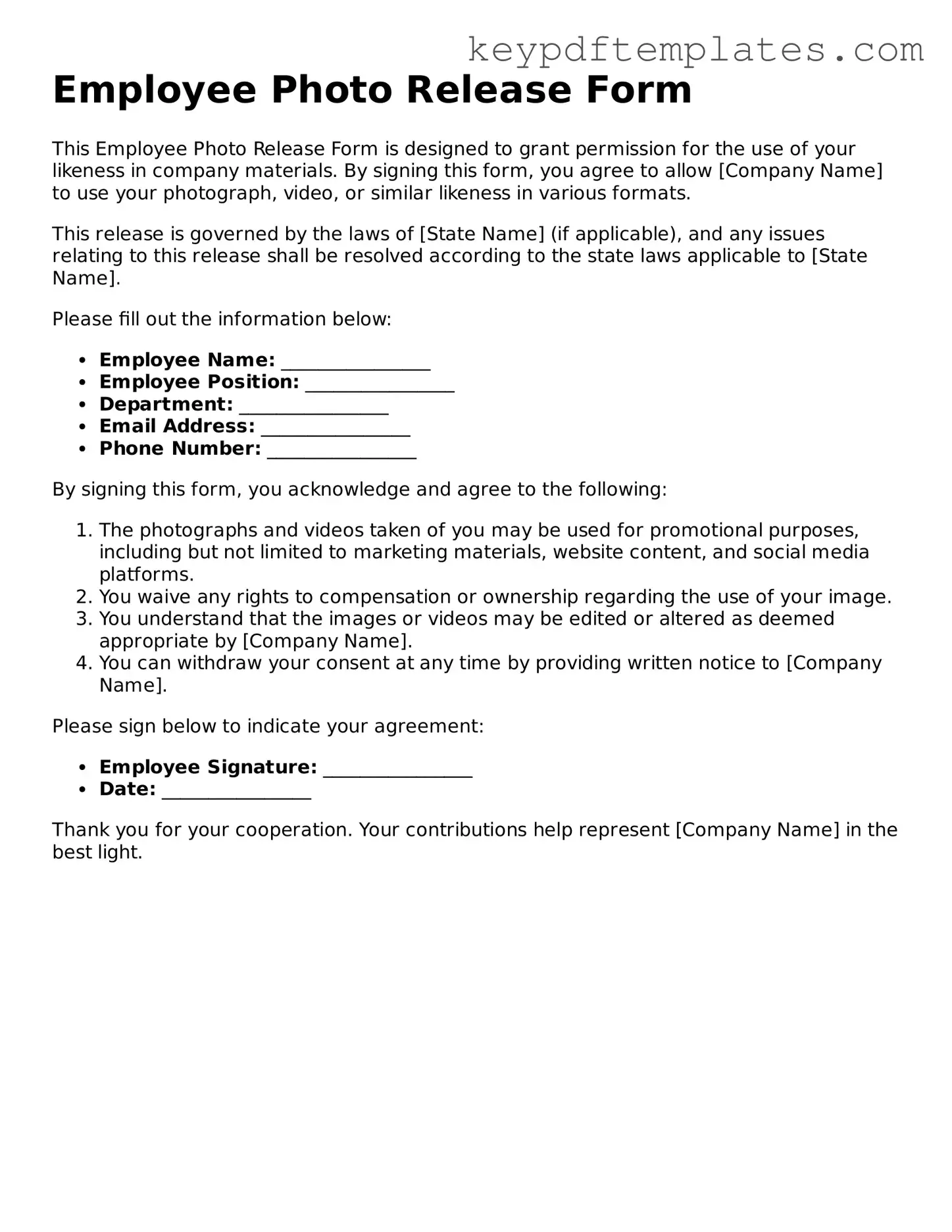Printable Employee Photo Release Template
The Employee Photo Release form is a legal document that grants permission for an employer to use an employee's likeness in photographs or videos for promotional and marketing purposes. This form helps protect both the employee's rights and the employer's interests. Understanding its importance can clarify how personal images may be utilized in the workplace.
Modify Document Online
